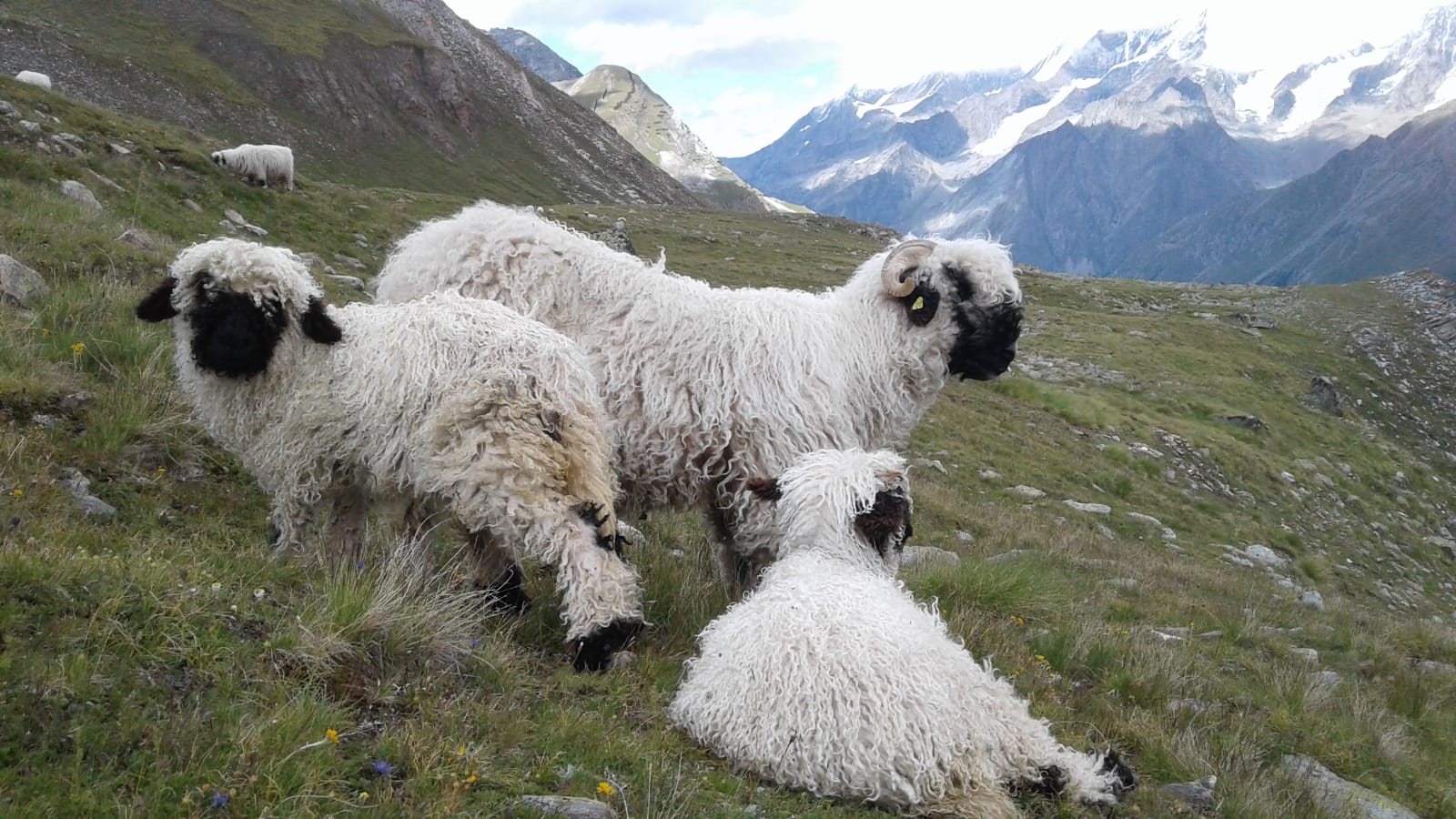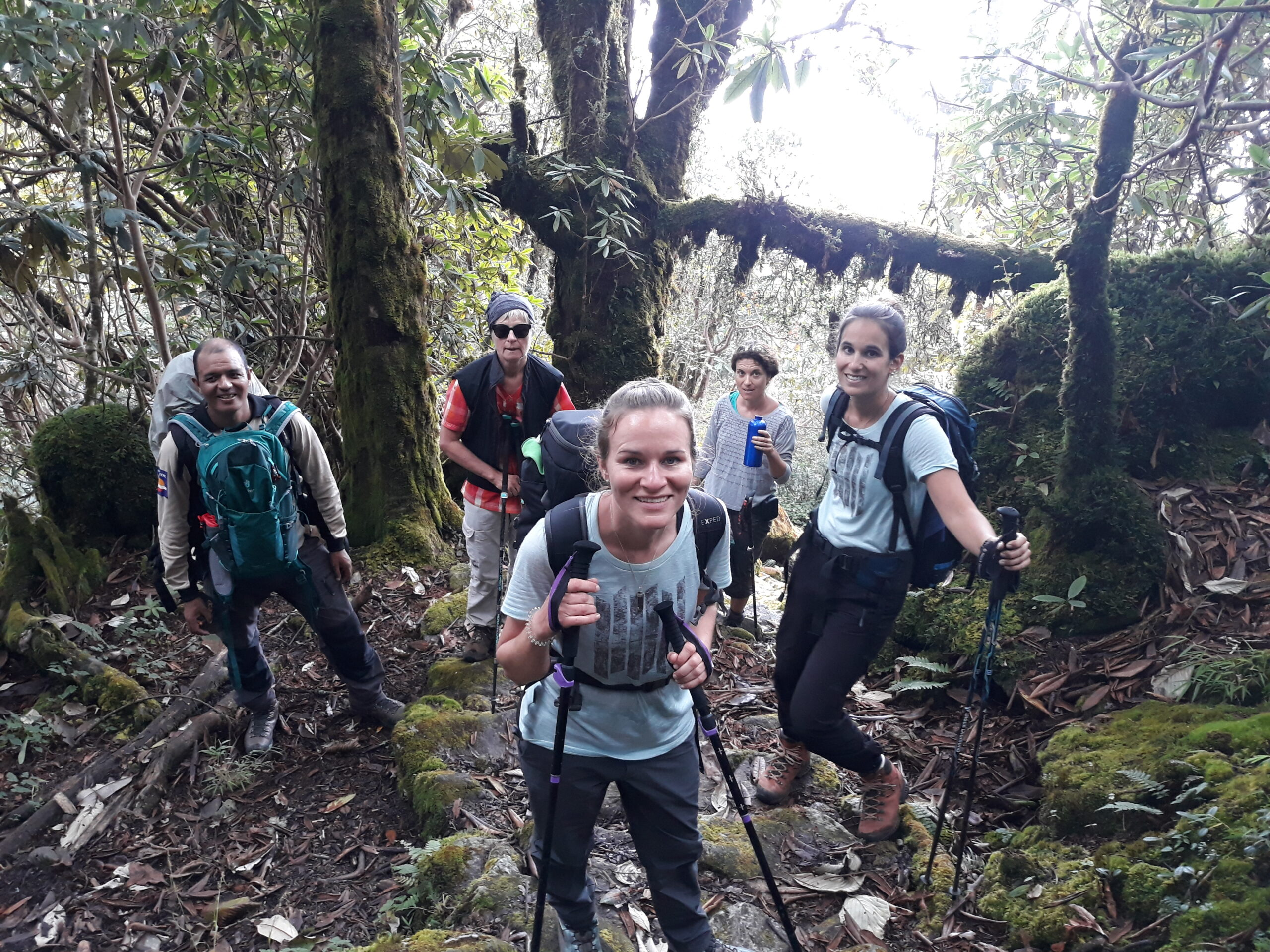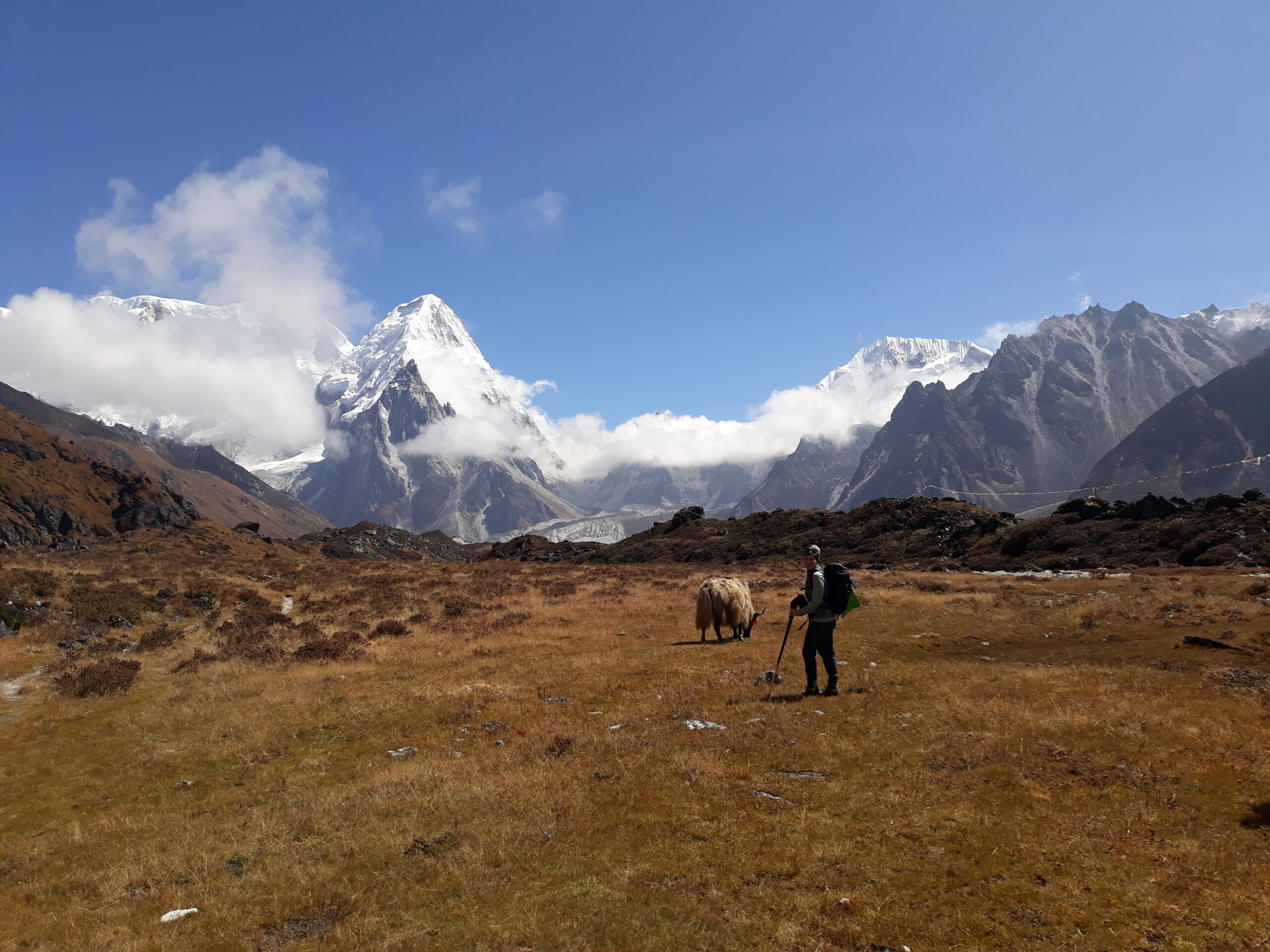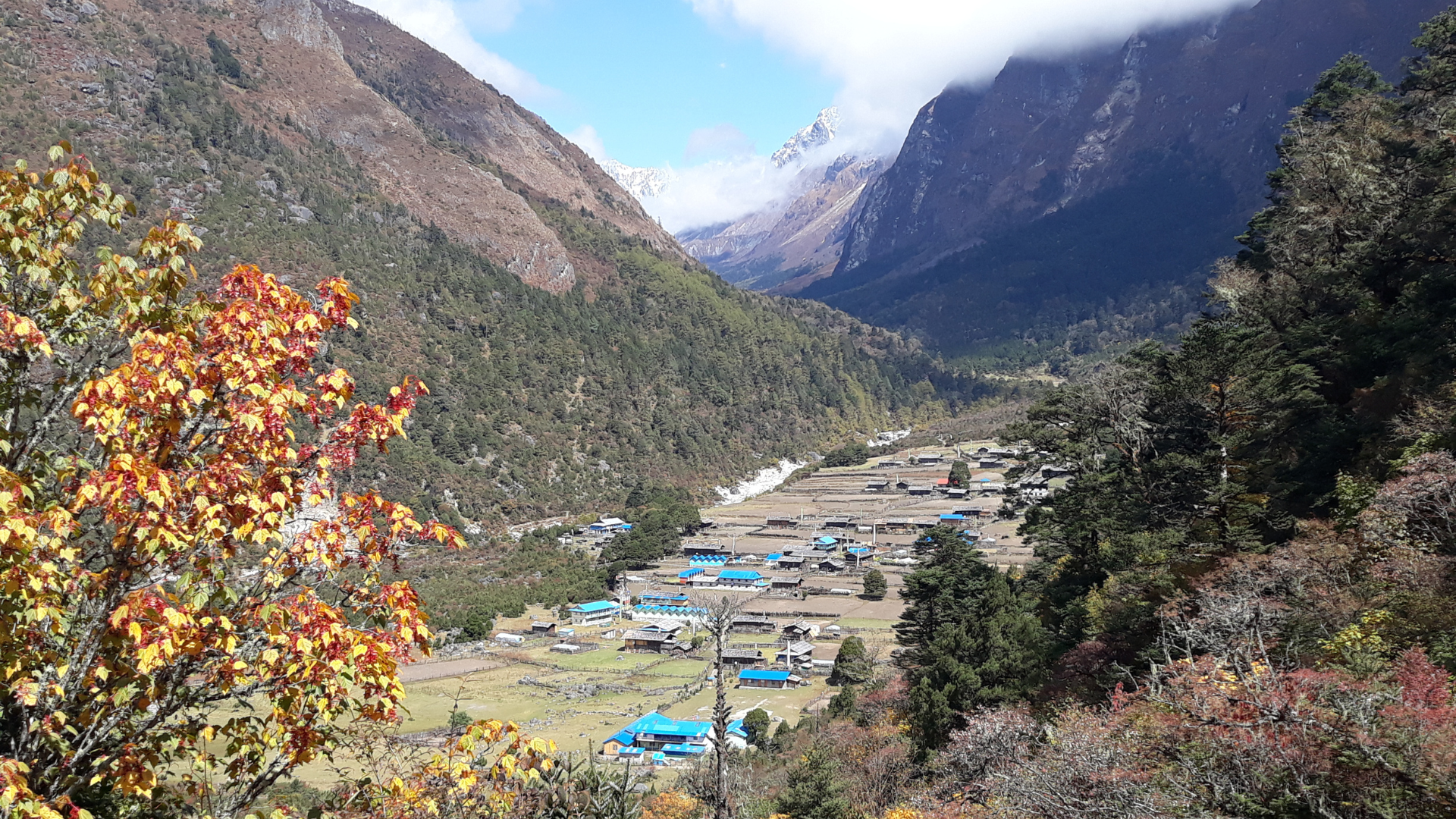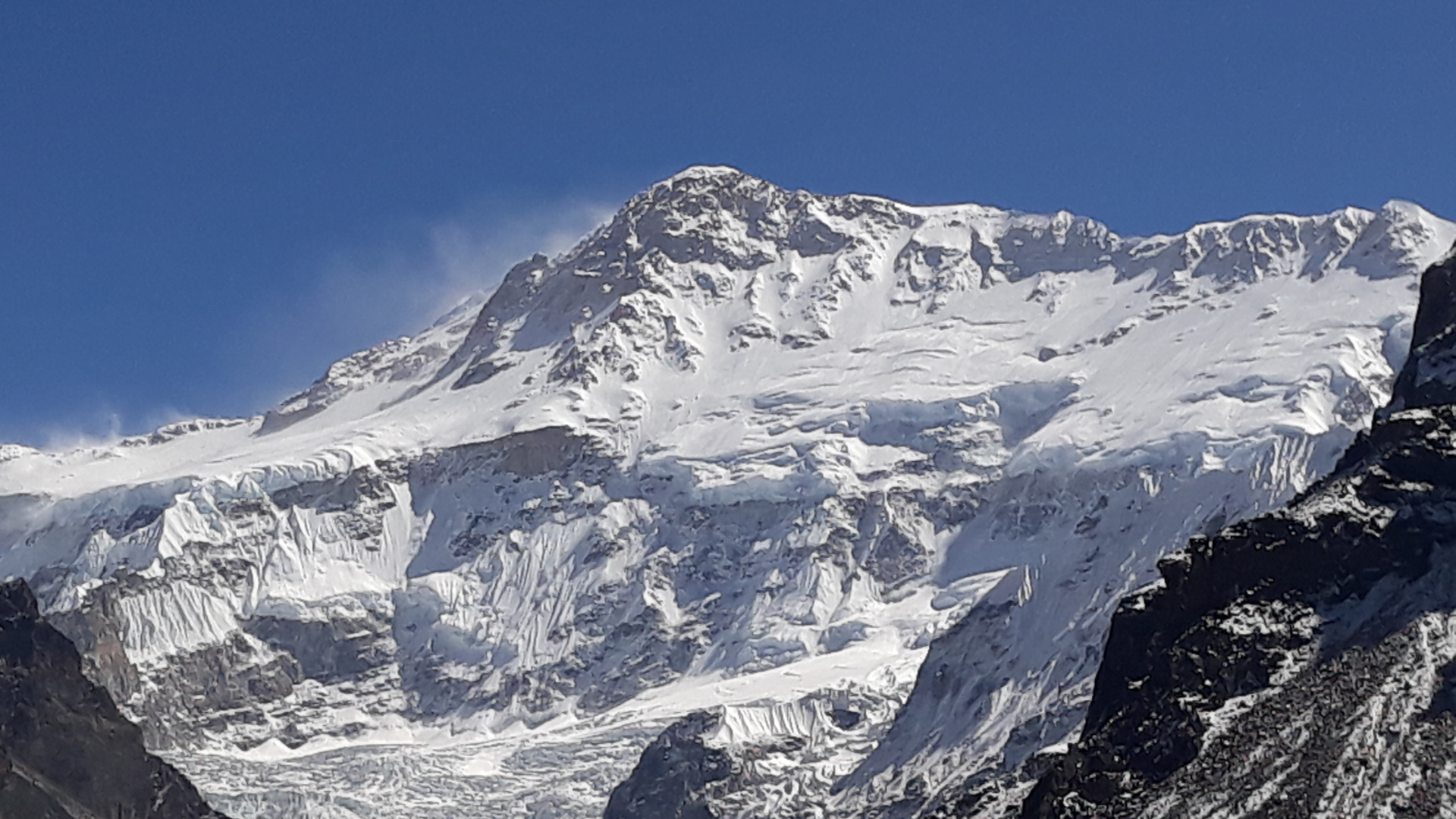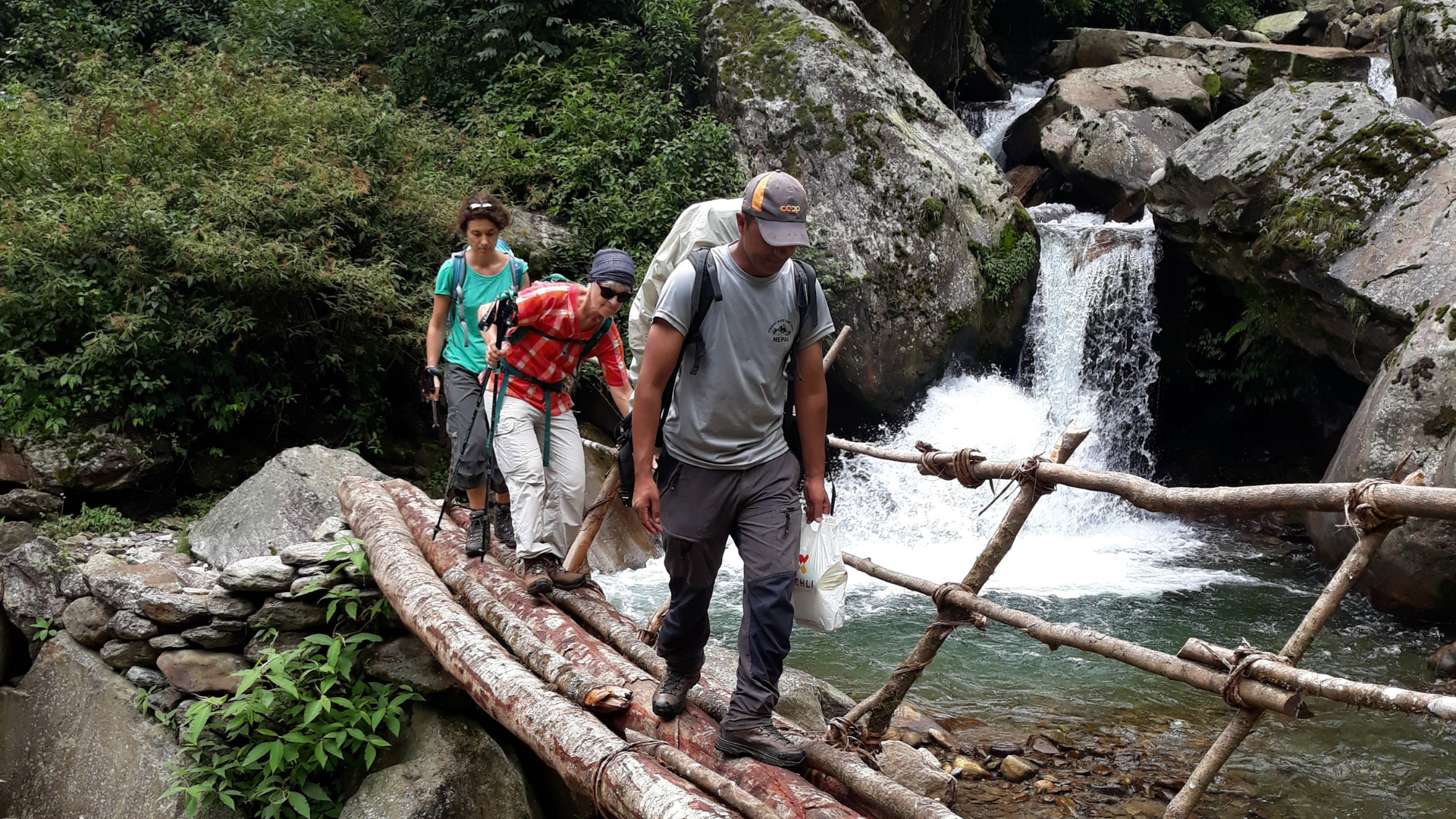- Home
- Kanchanjungha N/S Basecamp Trek
Kanchanjungha N/S Basecamp Trek
HIGHLIGHTS
- The colorful blooming rhododendrons that can be found at Taplejung.
- The warm hospitality of the locals residing in the trails of kanchenjunga base camp.
- Spectacular himalaya scenery of many 8000m peaks
16,715ft
Kanchanjugha
24
Moderate
2-12
April - May & October - November
Description
The Kanchenjunga trek is a (220 km) long camp trek which is known as one of the greatest himalayan trails.The trekking route to Kanchenjunga Base Camp passes through the Arun valley which is said to be one of the most beautiful regions to go trekking in Nepal.
This route includes a wide range of wonderful scenery of mountain ranges, traditional sherpa villages, himalayan wildlife and high onto the glaciated base camp of the third highest peak in the world.The terrain is often rough with rocky paths and some long hills. The trek starts from the subtropical region of Taplejung, through beautiful temperate forests of maple, chestnut and birch trees. Even though farming is less productive in the hilly regions, you can still see terraced fields around these lower regions.
The favorable months to visit Kanchenjunga base camp are in April, May and early June, and during October and November to early December. Trekkers say that during these seasons there is stable weather, clear skies, warm days and cool nights. According to trekkers, the Kanchenjunga trek is a quiet trek. They say that people mostly meet each other on the trails and in the lodges but less in the central region.
The Kanchenjunga Base Camp Trek in Nepal begins from Yuksom, and then it continues in Bakhim, Dzongri, Laxmi, Pokhari, Bukhari Chaurikhang and Rathong Glacier, Bikhbari and then it ends at Bakkhim.
Kanchenjunga Base camp is said to be 5160 meters above sea level. You can observe the stunning view of the third highest mountain in the world closely through the base camp. The basecamp is conserved inside the conservation area and the lush green forest with varieties of flora and fauna which is a major beauty along with the snow capped mountain range and traditional villages. The glaciated and snow covered peaks of the Sanctuary form a spectacular barrier. Stunning views confront trekkers as they trek up the last permanent settlements to the kanchenjunga base camp (5160m) where the trekkers are rewarded with breathtaking views of the kanchenjunga mountain
Itinerary for Kanchanjungha N/S Basecamp Trek
Days
1
Company staff will be there at the airport to receive the clients and company’s private vehicle comes to pick you up at the Tribhuvan International airport, Kathmandu and drops you at Hotel.
2
Company will brief you about the trip plan and preparation, safety & precaution as well as completes the procedure of necessary documentation. After the briefing, if you are interested, you get optional sightseeing activities.
3
We will take the earliest flight to Bhadrapur from Kathmandu today. After a 45 minutes flight above the diverse hills and terrains, we land at Bhadrapur Airport where you will meet your supporting crew. From the airport, we will drive directly to Taplejung for the night. The drive on the blacktop road goes past the vast landscapes, high hills, and small mountains passing via the beautiful lush tea garden of Kanyan and Fikkal in Ilam. As we approach our guesthouse in Taplejung we are welcomed by the black/big cardamom forests. Taplejung is the biggest producer of the spice called black/big cardamom in the world. Once at our lodging, we rest and look forward to the trip.
4
A scenic drive from Ilam to Chhiruwa via Phidim and Taplejung, starts by heading southeast on the Mechi Highway. As we approach Phidim, you’ll experience the charming landscapes of the eastern hills. Continue on the highway through Taplejung, where you can enjoy views of lush greenery and mountains. The road is winding in some sections, but it offers picturesque scenery. Along the way, we’ll pass through small towns and villages, providing a glimpse into the local culture. Eventually, we’ll reach Chhiruwa, completing our journey with a mix of mountainous terrain and serene landscapes.
5
After our delightful breakfast at Chiruwa, we begin our walk via a suspension bridge over the river entering the conservation area. Once our permits are checked at the park’s office, we will walk along the bank of Tamor River into the cardamom garden. We come across beautiful traditional villages, terraced farms and fields, and numerous waterfalls and streams. The Kirati peoples’ culture and lifestyle will be the highlight of today’s walk. Upon reaching our destination, we check in at our teahouse and relax.
6
We will be hiking through the man-made stone steps trail today. The first half consists primarily of uphill treks, while the second segment consists of difficult and steep climbs. Our trail ascends from the Kirati communities in the lower region to the Sherpa settlements. We take lunch on the riverbank at Lamataar before continuing uphill to Amjilosa, which has a few Sherpa residences and yak pasturelands.
7
We begin our journey early in the morning on rocky stone steps, passing past landslides, small streams, and spectacular waterfalls. Our difficult ascent continues through a thickly forested zone of dense rhododendron and old oak trees, past small communities buried in the calm valley below the mountains, and a quick lunch stop at Gyabla. We will get the first mountain view of Kumbhakarna/Jannu Peak from here.
8
The first part of the trek is a steep drop. We walk through fir and rhododendron forests along the riverbank. We mostly trek in the yak pastures and potato fields of phaley 3210m. Above Phaley, the valley widens. The trail improves through fields and larch forests. It dips down to the riverbed before crossing to Ghunsa Khola. We cross a bridge to the village of Ghunsa overnight at a local guesthouse here.
9
We spend an extra day in Ghunsa to allow us to rest and acclimate to the high altitude. For the acclimatization purpose, we hike over the river above the settlement, which takes about 4 hours round trip. We'll spend the rest of the day wandering around this Tibetan village, interacting with the inhabitants and learning about their rich culture. One can buy some local handmade Tibetan handicrafts and souvenirs before heading further ahead
10
We leave Ghunsa and start our trek through a pine and rhododendron forest. Walking along the Ghunsa Khola's east bank, we pass Buddhist mani walls and chortens and colorful prayer flags. The mountain scenery becomes more intense today with the north face of Jannu. We cross the landslide with caution following the slopes of the hillside before descending to Khambachen. This is a Tibetan village with dwellings tucked on a green plain surrounded by mountains.
11
Khambachen is our second acclimatization point on this Kanchnjunhga Circuit Trek. The spectacular vistas of Mount Jannu are well worth the hike up Nupchu Khola from Khambachen. We head up to the Jannu shrine at 4,400m for a lengthier hike. It will take us 5 to 6 hours to walk there and return.
12
With a challenging day ahead, we will start our trek quite early in the morning. First, we will be passing through an impressive rocky field with large boulders that are scattered across a beautiful landscape. Next, we will reach a waterfall and a river. As we approach another landslide zone, we will be taking some rest in Ramtang Monastery. We will then have to cross the landslide section at a fast and steady pace, before descending to another river and arriving at Lhonak, where we will be spending the night. Today, we get the first glimpse of our major target, Mount Kanchanjungha, as well as other gorgeous mountains.
13
An early start for the walk to Pangpema 5143m, the Kanchanjungha North Base Camp, for magnificent views of Kanchanjungha's main peak with Wedge Peak, Tent Peak, Nepal Peak, Cross Peak, and the Twins. The stony slight uphill trail follows moraine for much of its length and is quite in poor shape due to its ever-changing nature and occasional use. After exploring the main destination of this journey, we will return to Lhonak for the night.
14
Continuing our descent, we will trace our steps back by following the trail from Lhonak to Khambachen all the way to Ghunsa, where we will be spending the night. This time we will be enjoying magnificent views that were previously behind us and have more opportunities to stop for pictures.
15
After breakfast, we set out on our journey. Leaving Ghunsa, we follow the step-stone steps and ascend through rhododendron, birch, and pine forests. Then we come to a chorten with prayer flags, which marks the beginning of a steep trail. Our walk goes through natural stone steps, mountain views, and mountain vegetation with numerous waterfalls. Then we gradually ascend to the camp via a beautiful pass from where the peaks like Sarphu III 5865m, Khabur, Bokton 6,143m, and others are seen.
16
Today's hike takes us on a hard roller-coaster ride, passing via three passes: Selele 4645m, Mirgin La 4640m, and Sirelapche Bhanjyang 4670m. Mirgin La offers the best view of Mounta Kanchanjungha. En route, we come across yak grazing, sheds, pastures, rare medicinal herbs, waterfalls, and small glacier lakes. The descent after the last pass is steep but brief, passing through the Jor Pokhari Lake and juniper woodland. From here, we can view Kabru and the Yalung glacier. As we climb through the region till the path gradually slopes down on a super steep mountain trail to our rest stop at Cheram, Everest and Makalu contribute to the incredible view before us. There is a high chance of snowfall here.
17
We climb through jungles on the Stone Mountain trail for a while before reaching the Yalung Glacier's snout. The views of various Himalayan peaks are also something we treasure along with Glacier Lake, yak sheds, and pastures. Before arriving in Ramche, we travel past Lapsang La and walk on a completely flat trail. Once we reach Ramche, if the weather is nice we can do an optional day hike up to Oktang view point the same day for sunset view and trek back to Ramche.
18
Early in the morning, we follow the flat trail across the valley, yak pastures, and reach the Oktang Glacier which is also the south base camp of Mount Kanchanjungha. The views of the Himalayas from Oktang are breathtaking; the entire cirque is above 7500 meters. The vantage point also offers a beautiful view of the glacier. We visit the Okthalung temple there. After spending some time there, we trek back to Ramche for the night.
19
After breakfast at Ramche, we return to Cheram by retracing the track with the stunning Mountain View along the route. This will be a rather easy walk, with the majority of it being downhill. We continue walking to Torengthin along the river on a stony mountain trail, passing through a rhododendron forest. Torengthin is located amid farm areas with a tiny cattle herders’ settlement surrounded by woods, red panda habitat. We'll spend the night in this quaint place.
20
We leave Torengthen after breakfast and follow the trail ascending via a forest of rhododendron and pine tree lines and a landslide zone. It takes roughly 3 hours to get to Lamite Bhanjang for lunch. After lunch, the track descends for about 2 hours on a decent path before crossing the Imja Khola. Before plunging into Yamphudin, the trail contours around the slope passing some streams, entering a gorge, and then into an open broad terrain. Sherpas, Rais, Limbus, and Tamangs make up the population of this village. The locals call this small village Sherpa Gaun. The Kanchanjungha Conservation Area office is also located here.
21
The drive from Yamphudin to Ilam via Gopetaar and Phidim, start by heading northwest on the local roads from Yamphudin. Navigate through the scenic landscapes as we pass through Gopetaar. The road may be winding in certain sections, but it offers picturesque views of the hills and greenery. When we continue towards Phidim, enjoying the journey through charming towns and villages along the way and the road conditions may vary. As we approach Phidim, take in the cultural richness and natural beauty of the region. From Phidim the road climbs up to Pauwa Bhanjyang, the view point to see Kanchanjungha mountain range. Then the road descends to Ranke bazaar and finally we reach Ilam Bazaar.
22
The drive from Ilam to Bhadrapur follows the Mechi Highway heading south. We pass through the towns of Kanyaam, Phikkal and beautiful tea gardens on the way. The journey offers scenic views of the eastern hills, and we'll traverse through diverse landscapes before we reach Bhadrapur. As we approach Bhadrapur, the terrain may change, providing a mix of rural and suburban surroundings. The drive typically takes a few hours, but actual time may vary depending on traffic and road conditions. Taking some rest and waiting for flight, in a few hours of time we fly to Kathmandu.
23
On the sightseeing day, we take you to Bhaktapur Durbar square, Patan Durbar square, Pashupatinaath temple and Bauddhanaath stupa. You will have a guided tour of the cities by private vehicles to visit the World Heritage Sites and Hindu, Buddhist pilgrimage.
24
We help you prepare for your departure on this day and escort you to Tribhuvan International Airport on time for you to catch your flight. A private vehicle comes to pick up from hotel and drops you at Tribhuvan International Airport, Kathmandu.


